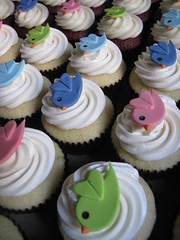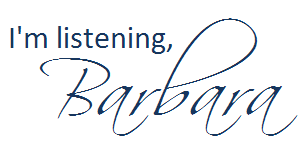
In COMM 4633 (Social Media for PR), we’ll all blog about the same topic each week during the semester. Your TOWs should be posted by Sunday midnight at the end of each week.
Some weeks have more than one topic listed; choose one of the available topics on those weeks.
If you have a topic to suggest, please add it as a comment to this blog post.
If you are unsure how to get started writing these TOWs, many times you can use this three-pronged approach:
- What did you learn?
- What surprised you?
- What do you want to know more about?
WEEK ONE
Which types of social media you currently participate in (such as blogging, podcasting, social networking, etc.), which platforms you use, and why? Which platforms have you considered, but haven’t yet tried?
WEEK TWO
Why is it important to include images in blog posts? What are some approaches to choosing effective images and ensuring that you have the right to use them in a post?
WEEK THREE
Is social media monitoring ethical? Provide commentary and discussion on both sides of the issue, and offer your personal viewpoint.
WEEK FOUR
Write a post related to your assigned chapter in Groundswell. Provide links to several of the examples mentioned in your chapter, or to new sites that relate to the chapter. See if you can find a YouTube video or SlideShare presentation and embed it in your post. (Remember to link to the book, either at Amazon.com or at the publisher’s website/blog.)
WEEK FIVE
Which Super Bowl ad was either your favorite OR least favorite? Embed the ad in your blog. And in your discussion of the ad, be sure to discuss the publics that were targeted in the ad. (Be sure your readers can tell if you liked or disliked the ad.)
OR
Adam Vincenzini asked on Twitter and on his blog for people to share their definitions of “social media” with him, in 140 characters or fewer. Read through the list of definitions that were shared with Adam. Pick a few that resonate with you and discuss why these definitions “work” for you. Develop your OWN 140-character definition of social media. Tweet your definition, and embed the tweet in your blog.
WEEK SIX
“Social Media: Friend or Foe?” :: Listen to Shel Holtz, Mark Ragan and others discuss “concerns and objections around the adoption of social media communication channel.” React to it using the three-pronged approach, discussed earlier in this blog post. (NOTE: Mark Ragan is playing the role of an executive who is unsure if social media is right for his organization.)
WEEK SEVEN
Participate in a public relations or social media Twitter chat. Petya Georgieva provides a list of 13 possibilities at her Higher & Higher blog. (I highly recommend #PRStudChat, which meets on January 18 and February 15, but you are free to chose from any of the 13 options.) Before you participate in the chat, be sure to read Shonali Burke’s tips for how to make the most of a Twitter chat. After the chat, briefly describe the purpose and intended audience of your chosen chat. React to your own participation in the chat using the three-pronged approach (discussed earlier in this blog post).
WEEK EIGHT
Since our focus for this week is podcasting, write this week’s TOW on something related to podcasting. Potential areas for discussion include: what would drive an organization to choose a podcast as a way of connecting with its internal or external publics, the importance of shownotes, technology you can use for podcasting or how PR majors can benefit from listening to PR podcasts.
WEEK NINE
This week’s topic was inspired by Adam Vincenzini’s Be My Guest month: post something by a guest blogger. Connect with another blogger (it can, but doesn’t have to, be someone in your class) and exchange blog posts for the week. (You don’t have to write something new . . . share your favorite post you’ve written this semester.) In your own blog, make it really clear that the post is written by another person, and link to your guest’s blog.
WEEK TEN
What is this Foursquare thing that we keep seeing in our Twitterstreams? How can companies benefit from it? And what are some of the potential dangers of using Foursquare (and other location-based services) for individual participants?
OR
Pinterest has taken the Internet by storm in the past few months. What is it, and how can (some) companies or organizations benefit from using Pinterest?
WEEK ELEVEN
Set up an account at Diigo, a social bookmarking site. Create social bookmarks to at least 20 sites; these could include classmates’ blogs, PR blogs, your university, your favorite musical artist or actor, etc. In your Topic of the Week, share a link to your Diigo account. Discuss how college students (especially those working in groups) could benefit from social bookmarks. Be sure to include a link to your Diigo bookmarks in your blog post. Optional: how could an association, like the Florida Public Relations Association or the International Listening Association, use social bookmarks to benefit its members?
WEEK 12
One of this week’s readings concerned widgets and badges. After briefly describing the difference between a widget and a badge, offer suggestions on how one specific organization you are a part of (or wish to become a part of) could benefit from using widgets or badges.
WEEK 13
Just what is it that makes a simple little video like “David After Dentist” become a Viral Video? Also, embed at least two of your favorite videos that went viral and explain why you chose them.
WEEK 14
Of all the professional and peer blogs you read (and commented on) this semester, which ones are your favorites? Pick at least one from each category (professional and peer), and explain why you chose them.










